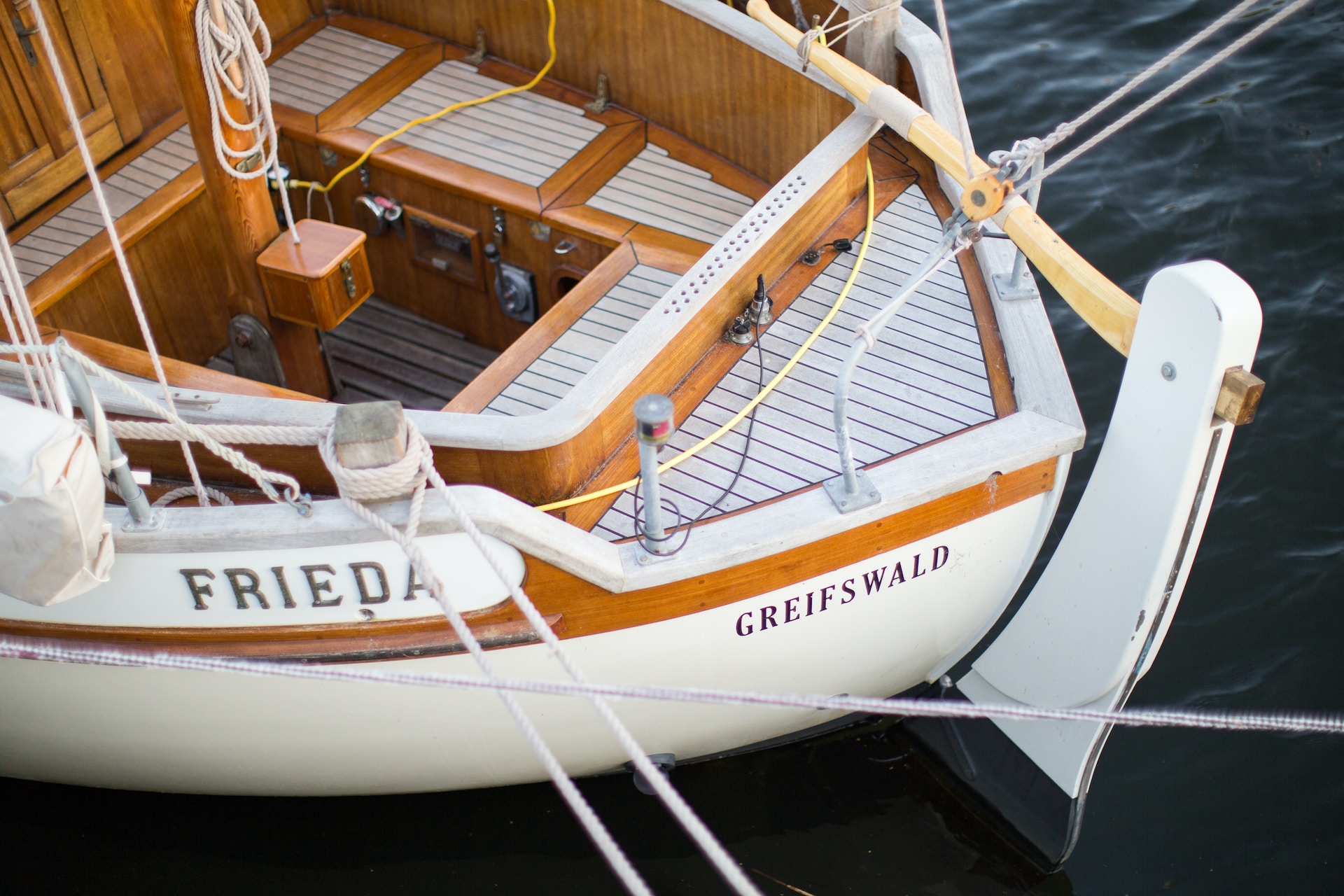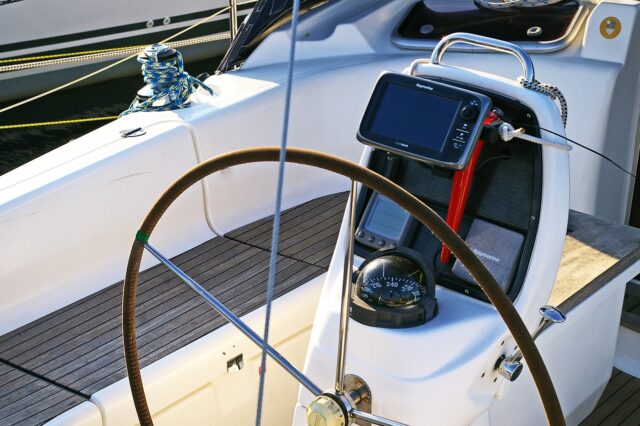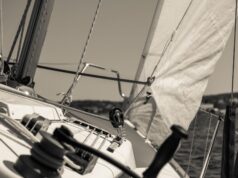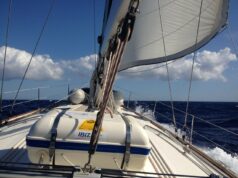Navigating the vast expanse of the world’s oceans has always been a challenge, one that mariners have faced with determination and skill for centuries. At the heart of this challenge lies the art of steering, a fundamental aspect of maritime navigation that ensures ships sail safely from one port to another.
Overview of Maritime Navigation and its Significance
Maritime navigation is more than just plotting a course on a map; it’s about understanding the sea, the ship, and the myriad factors that influence a voyage. From unpredictable weather patterns to the intricate dance of celestial navigation, sailors have always relied on a combination of knowledge, experience, and technology to guide them. The significance of maritime navigation cannot be understated. It’s not just about reaching a destination; it’s about ensuring the safety of the crew, the cargo, and the vessel itself.
Introduction to the Steering Mechanism of Ships
Central to the act of navigation is the ship’s steering mechanism. Often referred to as the ‘helm,’ this crucial component dictates the direction in which a ship moves. But what exactly is the helm? And why is it so pivotal in maritime navigation?
The helm, in its most basic form, is the steering wheel of the ship. However, unlike the steering wheel of a car, the helm of a ship is connected to a complex system of rudders, tillers, and other components that determine the ship’s course. The act of turning the helm, known as ‘helming,’ requires precision, understanding, and often, a touch of intuition. It’s a dance between the helmsman and the sea, where every turn can mean the difference between smooth sailing and potential peril.
Incorporating technologies and methodologies like Drift, Conning Officer, and Tiller, modern-day helming has evolved, but the essence remains the same. It’s about charting a course, making adjustments as needed, and ensuring that the ship sails true, no matter what challenges the sea might throw its way.
The Helm – The Heart of Steering
The vast oceans have been a source of wonder and challenge for sailors since time immemorial. At the core of every ship’s journey across these waters lies its steering mechanism, the helm. A symbol of control and direction, the helm is more than just a wheel; it’s the heart of a ship’s navigation system.
Definition and Components of the Helm
The helm, often visualized as the grand wheel standing tall on a ship’s bridge, is the primary device used to steer a vessel. However, the helm is more than just its wheel. It’s a combination of various components, each playing a pivotal role in determining the ship’s direction. The wheel is connected to the tiller, a lever that, in turn, connects to the rudder. The rudder, submerged in water, is what actually causes the ship to change direction when turned.
Historical Evolution and Significance in Maritime Navigation
The history of the helm is as rich and varied as maritime history itself. Ancient sailors used simple steering oars before the invention of the rudder. As ships grew in size and complexity, so did the need for a more sophisticated steering mechanism. The evolution from steering oars to the modern helm, integrated with advanced technologies, showcases humanity’s relentless pursuit of maritime excellence.
The helm’s significance in maritime navigation is paramount. A ship without a functioning helm is like a bird with a broken wing; it cannot be directed or controlled. The helm ensures that the ship follows the course set by the Conning Officer and responds to the ever-changing conditions of the sea. It’s a tool of precision, requiring both skill and understanding to operate effectively.
In the world of sailing, the helm stands as a testament to mankind’s ability to harness the power of the sea, guiding massive vessels through waters both calm and tumultuous. As we journey further into the realm of maritime navigation, we’ll uncover the nuances of helming, the role of the helmsman, and the intricate dance between man, machine, and the vast oceans.
Helming and the Role of the Helmsman
As the sun glistens over the horizon and the waves rhythmically caress the ship’s hull, a singular figure stands poised at the helm, guiding the vessel through the vast expanse of the ocean. This figure, the helmsman, plays a pivotal role in the art of maritime navigation, ensuring that the ship sails true to its course.
Introduction to the Act of Helming
Helming, at its core, is the act of steering a ship. It’s a task that requires a deep understanding of the vessel, the sea, and the conditions that might affect the journey. While the helm provides the means to steer, helming is the art of using that tool effectively. It’s about making minute adjustments, feeling the ship’s response, and ensuring that the vessel remains on its intended path. With factors like Drift and the ship’s own momentum at play, helming becomes a dance of precision and intuition.
The Importance of Helming in Maintaining a Ship’s Course
A ship’s course is its planned path across the ocean. While modern navigation tools provide detailed maps and routes, it’s the helmsman’s responsibility to ensure that the ship adheres to this course. Even with advanced technologies, the sea remains unpredictable. Currents, winds, and other vessels can all necessitate adjustments to the ship’s direction. Helming, in these situations, ensures that the ship doesn’t stray from its path, safeguarding both the vessel and its crew.
The Responsibilities and Skills of a Helmsman
The helmsman is more than just the person who turns the wheel. They are the eyes and ears of the ship, constantly vigilant and attuned to the vessel’s needs. A skilled helmsman can feel when the ship begins to veer off course, even before instruments detect it. Their responsibilities extend beyond mere steering. They communicate with the Conning Officer, relay information about potential hazards, and work in tandem with the crew to ensure smooth sailing.
Furthermore, the helmsman’s skills are honed over years of experience. They must understand the intricacies of the Tiller, the nuances of the ship’s response, and the myriad factors that can influence a voyage. It’s a role that demands respect, understanding, and a deep love for the sea.
Shifting the Helm – Making Adjustments
The vastness of the ocean is matched only by its unpredictability. As ships sail through its waters, they are often met with challenges that require swift and precise adjustments. At the heart of these adjustments lies the helm, and the act of shifting it to navigate the ship safely through various conditions.
The Concept of “Shifting the Helm” and its Implications
To “shift the helm” is to make adjustments to the ship’s steering, ensuring it remains on its intended course. This can be a slight turn of the wheel or a more significant maneuver, depending on the situation. Shifting the helm is not just about reacting to immediate challenges; it’s also about anticipating potential obstacles and adjusting the ship’s course proactively.
For instance, when faced with strong crosswinds or powerful currents, the helmsman might need to shift the helm continuously to counteract these forces. The implications of such adjustments are vast. A timely shift can mean the difference between navigating safely through a narrow strait or running aground.
Differences in Shifting the Helm to the Right vs. the Left
The direction in which the helm is shifted plays a crucial role in determining the ship’s response. Shifting the helm to the right (starboard) will turn the ship to the right, while shifting it to the left (port) will turn the ship to the left. This might seem straightforward, but in the heat of the moment, with factors like Drift and the ship’s momentum at play, the helmsman must be acutely aware of the ship’s position, the direction of the wind, and other variables to make the correct adjustment.
The Impact on the Ship’s Direction and Course
Every shift of the helm has a direct impact on the ship’s direction. A slight turn can change the ship’s course by several degrees, which over long distances can lead to significant deviations from the intended path. Moreover, in congested waters or near coastlines, even minor errors in judgment while shifting the helm can lead to collisions or the ship running aground.
The act of shifting the helm, therefore, is a testament to the helmsman’s skill and the intricate dance between the ship, the sea, and the forces of nature. As we sail further into the depths of maritime navigation, we’ll uncover the myriad challenges faced by sailors and the tools and techniques they employ to ensure safe and efficient voyages.
Nautical Terminologies Related to Steering
The world of maritime navigation is as vast as the oceans themselves, and with it comes a rich tapestry of terminologies that have evolved over centuries. These terms not only provide a means of communication among sailors but also encapsulate the history, traditions, and intricacies of life at sea. In this section, we’ll delve into some key nautical terminologies related to steering, shedding light on their meanings and significance.
Introduction to Terms like “Drift” and “Conning Officer”
- Drift: One of the fundamental terms in maritime navigation, drift refers to the lateral movement of a ship caused by external forces like wind or currents. It’s a phenomenon that can affect a ship’s course, requiring the helmsman to make adjustments to counteract its effects. Understanding drift is crucial for accurate navigation, especially in challenging sea conditions.
- Conning Officer: The conning officer is a pivotal figure on the ship’s bridge. Tasked with overseeing the ship’s navigation, they provide directions to the helmsman, ensuring the vessel remains on its intended course. Their role involves making crucial decisions, especially in congested waters or during complex maneuvers.
The Phrase “Con the Helm” and its Significance
To “con the helm” is a nautical command given by the conning officer, directing the helmsman to take or maintain control of the ship’s steering. The term “con” itself has historical roots, originally meaning to “guide” or “direct.” In modern maritime parlance, it signifies the act of guiding the ship through various navigational challenges, with the helmsman executing the conning officer’s directions.
Other Relevant Nautical Terms and Their Meanings
- Tiller: An essential component of the helm, the tiller is a lever attached to the rudder. It plays a crucial role in steering, allowing the helmsman to control the ship’s direction with precision.
- Starboard and Port: These terms refer to the right and left sides of the ship, respectively, when facing forward. Understanding these directions is fundamental for steering and navigation.
- Rudder: Located at the ship’s stern, the rudder is a flat piece that extends into the water. By turning the rudder using the helm, the ship’s direction can be controlled.

Ensuring Precision in Steering
In the vast and unpredictable realm of the sea, steering a ship with precision is of paramount importance. The helm, as the heart of a ship’s navigation system, plays a pivotal role in this. But with the ever-evolving technological advancements, the art of steering has reached new heights of accuracy and efficiency.
The Importance of Precision in Maritime Navigation
Maritime navigation is a complex dance between man, machine, and the vast oceans. The importance of precision in this dance cannot be overstated. A slight miscalculation or a minor deviation can lead to significant challenges, from straying off course to potential collisions. In the vast expanse of the ocean, where landmarks are scarce and the horizon seems endless, steering with precision ensures the safety of the vessel, its crew, and its cargo. It’s not just about reaching the destination but ensuring that the journey is safe, efficient, and on course.
The Concept of “Minding the Helm”
“Minding the helm” goes beyond the act of steering. It’s about being acutely aware of the ship’s direction, its surroundings, and the myriad factors that might influence its course. To mind the helm is to be in tune with the ship and the sea, making necessary adjustments, anticipating challenges, and ensuring that every turn of the wheel is purposeful and precise. It’s a continuous process of monitoring, evaluating, and reacting, ensuring that the ship remains on its intended path, irrespective of the challenges posed by the sea.
The Role of Technology in Enhancing Steering Precision
The age of technology has ushered in a new era for maritime navigation. Advanced navigational systems, GPS, and automated steering mechanisms have greatly enhanced the precision of steering. These technologies provide real-time data, allowing helmsmen and Conning Officers to make informed decisions. Automated systems can make micro-adjustments, countering the effects of Drift and other external factors, ensuring that the ship remains on course.
Furthermore, technologies like dynamic positioning systems allow ships to maintain their position even in challenging sea conditions, showcasing the marvel of modern engineering in maritime navigation. These advancements not only ensure precision but also reduce the margin of error, making voyages safer and more efficient.
FAQs on Maritime Steering
The realm of maritime navigation, with its intricate terminologies and practices, often sparks curiosity and questions. As we’ve journeyed through the world of steering, from the helm’s significance to the role of technology, several queries arise. In this section, we address some frequently asked questions to provide clarity and deeper insight into the art of maritime steering.
1. Why is the steering wheel on a ship called the helm?
The term “helm” has historical roots, originally referring to the handle or tiller used to steer a ship. Over time, as steering mechanisms evolved, the term came to encompass the entire steering apparatus, including the wheel. Today, the helm symbolizes control and direction in maritime navigation.
2. How has the steering mechanism evolved over the years?
Historically, ships were steered using simple steering oars. With advancements in shipbuilding and navigation, the rudder was introduced, offering more control and precision. The helm, as we know it today, has evolved to include advanced technologies, integrating systems like GPS and automated steering mechanisms, enhancing precision and efficiency.
3. What is the difference between “shifting the helm” and “minding the helm”?
“Shifting the helm” refers to making adjustments to the ship’s steering, either to change direction or to counter external factors like wind or currents. On the other hand, “minding the helm” is about paying close attention to the ship’s course, ensuring it remains on its intended path. It’s a continuous process of monitoring and making necessary adjustments.
4. How do modern technologies enhance steering precision?
Modern technologies, such as dynamic positioning systems, GPS, and automated steering mechanisms, provide real-time data and feedback. This allows for micro-adjustments, ensuring the ship remains on course. Automated systems can also counteract external factors like drift, enhancing the precision and safety of maritime navigation.
5. What role does the Conning Officer play in steering?
The Conning Officer oversees the ship’s navigation, providing directions to the helmsman. They are responsible for making crucial decisions, especially in congested waters or during complex maneuvers. With a comprehensive understanding of the ship’s position, surroundings, and potential challenges, the Conning Officer ensures the vessel remains on its intended course.
Conclusion: Reflecting on the Art of Maritime Steering
As we’ve journeyed through the intricate world of maritime navigation, one thing becomes abundantly clear: the helm, in all its forms and functions, stands as a testament to mankind’s enduring relationship with the sea. From the simple steering oars of ancient mariners to the technologically advanced systems of today, the art of steering has evolved, but its essence remains unchanged.
The helm symbolizes control, direction, and the unwavering spirit of exploration. It’s a reminder of the challenges posed by the vast oceans and the skills, knowledge, and technology we’ve harnessed to navigate them. The dance between the helmsman and the sea, the delicate balance of “minding the helm,” and the advancements that have enhanced steering precision all speak to our enduring quest to explore, understand, and conquer the oceans.
As we reflect on the significance of understanding nautical terms, the roles of the helmsman and the Conning Officer, and the impact of technology on maritime navigation, we’re reminded of the ever-evolving relationship between man and the boundless ocean. The future of maritime navigation promises further advancements, challenges, and discoveries, and the helm will undoubtedly continue to play a central role in guiding us through them.








